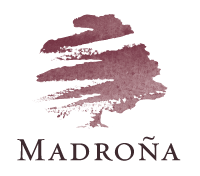Madroña Vineyards Blog
December 1, 2019
A Definitive 2019 Vintage Update and Recap
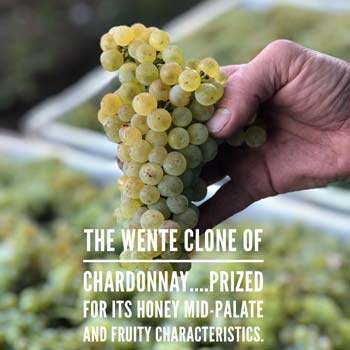
With the 2019 harvest and crush now in the books, it’s time to start prognosticating as to the overall quality, or at least that’s a common request in the tasting room. But before we start down that interesting combination of personal taste, guessing and marketing, I think it’s better that we talk about the challenges and benefits of the entire growing season. And I think we also need to note also that my take on the vintage may not be commonly embraced.
So here are a couple of the facts that need to be laid out before we even start. First, we are 100% Estate Grown, which means we use only our own fruit that we have 100% control over. Secondly, most of our vines are 20-45+ years old. Thirdly, we employ our own crew for the entire year…and they’ve been working for us for years. Lastly, we farm naturally (with only organic products) in the vineyard, thus potentially limiting our “arsenal” of sprays with unusual weather conditions.
With those important facts now in the discussion, we also need to separate this 2019 growing year into Spring, Summer and Fall as each had its own set of impacting aspects. So let’s move on!
Spring
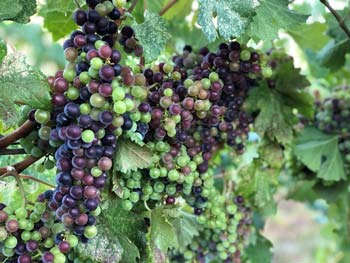
From the point of view of a grape-grower with vineyards in the higher “mountain” elevations, the spring conditions were wonderful if not interesting. Our number one concern in spring is frost. But with the relatively late bud-break combined with relatively moderate night and morning temperatures, we had no frost burn anywhere in any of our vineyards.
Bud break in late April to early May did start the vineyards off, though, a little late, thus projecting a slightly later than normal harvest (as compared to the last decade, but much more normal for the 1980’s and 1990’s).
The major challenge for the spring season, however, was the rains in the month of May. Our average rainfall is somewhere about 2 inches for the month with plentiful sunshine. The May of 2019, though, gave us over 7 inches of rain and cool and cloudy conditions throughout the month.
Now farming vineyards with only organic products can really be an issue here. Organic products for fighting mildew stay on the proverbial “outside” of the vine (as opposed to non-organic sterile inhibitors which are absorbed into the vine to prevent mildew). The issue with this is that every rain would wash off whatever we had sprayed, leaving the vine unprotected. And with the rains spaced every couple days, it didn’t make any sense to apply new sprays as they would just wash off (and that’s expensive too!).
In our favor, though, were three things. The main thing was that temperatures remained fairly cool (under 65 degrees for extended periods) which does not provide a good environment for mildew to grow. Add to this that most rain events were also followed by breezy conditions. Mildew needs temperatures between 70-85 degrees combined with a moist, protected setting. That’s the opposite to cool and breezy.
Lastly, we’ve been farming these vineyards since they were planted. Our diligence in keeping mildew to almost non-existence in the past meant that there was less inoculum source available now. And finally, our crew took this time to aggressively open up the vines by removing lots of basal leaves near the fruit. With the breezes now, the vines dried out quickly, preventing the environment for mildew. Once the rains stopped, we started applying the sulfur/mineral oils for the rest of the season.
We made it through almost unscathed, but I know other vineyards that were not so “lucky”.
Summer
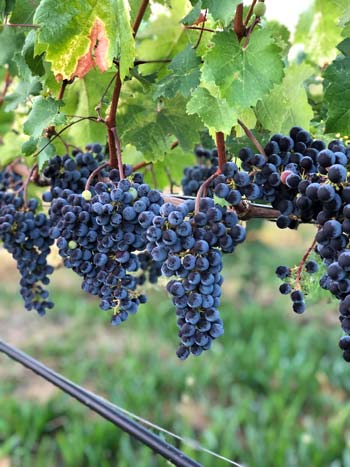
The spring turned to summer, and we could easily see that the harvest season would start a little late. The flowering season in late May to early June cemented this idea. Temperatures were moderate during flowering, providing for a very nice set (potential crop) in the vineyard. But even with normal summer temperatures, a vineyard in our area looks for about 100 days from flowering until harvest. And we were already late out of the gate with the cool spring!
But even the summertime temperatures seemed to remain cooler than “normal” without the intense spikes of heat we can sometimes endure. For grapes, this means a long and drawn-out maturing to veraison when the berries soften and turn color. This bodes extremely well for overall quality and development.
Now the question was, “How much crop should we let the vines carry and still insure a harvest before the rains of winter.” So we started dropping crop in the Grenache, the shoulders on the Zinfandels, touching fruit in the Marsanne, etc. We did everything to make sure we harvested, but also that we didn’t drop too much. It’s a guessing game, but we did guess right this time!
With the moderate summertime temperatures came an increased mildew pressure in the vineyards. Heat above 100 degrees can kill mildew, but that was not to come this season. (In fact at our 3,000 ft elevation, we never have the heat to kill mildew. Our mildew pressure is always amongst the highest in the state, which on the good side means we’realways prepared for years like 2019!)
And remember those May rains? Well, that additional moisture back in May promoted canopy growth, making more leaves, thus preventing airflow through the vine and then exacerbating the mildew issue. Whew! However for us, all that added handwork our crew did in spring was really starting to pay off. Our vine canopy remained mostly open needing just some additional leaf removal around the bunches.
The only risk with summertime leaf removal is the chance of getting sunburn on the fruit. Imagine the difference for your own skin of slowly acclimating to direct sun exposure versus just doing it all in one day? Grapes are no different, and they need cooler temperatures and less intense sun exposure (usually in June) to prepare for August’s direct hot sunshine. But timing is everything, and we had only a bit of sunburn in the Barbera. It desiccates the fruit and can impact color and tonnage, but luckily the amount was not too great.
With temperatures barely getting into the 80’s during a good portion of August, the fruit was maturing wonderfully slowly. This could be the vintage of the decade for us…as long as the fall weather held and we didn’t have an early winter. Farming is the ultimate gamble!
Fall
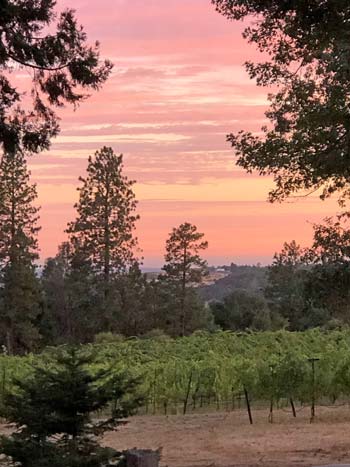
As luck would have it, the fall weather was spectacular. Well, kind of.
September was an interesting month, to say the least. The late August and early September temperatures (which often can be very hot) stayed mild and beautiful. For those battling mildew, there was no relief. For us, though, the potential quality of the grapes with is great weather was exciting. But remember that it’s also starting to be a race with the clock for finishing harvest before the weather changes.
And then the weather changed! Two storms in September pretty much at the beginning of picking brought us 2.6 inches of rain. That’s a lot for September and really could throw a wrench into the workings of harvest.
Truly, the biggest issue of getting rain during harvest is that the grape clusters get all wet. All those nooks and crannies get moisture in them, and with normal “warm” fall conditions makes for a perfect host for bunch rot (humid + warm = rot). And the thinner the skin of the grape variety combined with the tightness of the cluster, the greater the chance for botrytis, sour rot, black rot, etc. Zinfandel is particularly prone to these rots, and we still had 66 tons of Zin out on the vine.
I keep going back, though, to the importance of knowing your vineyards and how much work is done during the growing season. The way one combats these bunch rots is to make sure the vines dry out quickly. You hope that God brings in dry winds after the rain events to help. But of course, these breezes only dry out the clusters if your vines are open enough to let the air flow through. Now remember all that leaf work our crew did earlier in the year? Now it was paying off again in spades.
And we had one more bit of luck come our way. After all the rain, the temperatures at our high elevation remained relatively cool (like in the 50’s and 60’s). Bunch rots need some warmth to really get going, and this just wasn’t enough.
So the vines dried out, we were blessed with some cool temperatures, and there was no bunch rot to be found in any of our vines. If anything, the rains washed the season’s dust off the leaves, making the photosynthesis potential better for late season ripening.
And ripen they did. The weather held with incredibly moderate (not hot or cold) temperatures. This in itself elongated the harvest season letting us pick over a seven week period. Not only did this promote extended hang-time (thus potentially improving flavor development), but it also allowed us to “sanefully” determine when to pick each variety at its best. There was not rushing at all.
Now let’s talk about two things that 20 years ago I would have never thought would have been farming issues. The first is wildfires (or more specifically smoke), and the second is mandatory power shutdowns.
Our region had very little fire action this year, especially compared to the coastal areas. Parts of Sonoma’s wine districts actually had to evacuate their wineries during harvest. For us, our impact was very little. During harvest after the rains, a small control burn near Caples Lake in the Sierras got out of control. Due to the wind patterns, we had several mornings of smoky conditions which run a potential risk of adding smoky characters to the wine (mostly red grapes still on the vine). We adjusted our periods of skin contact, making them shorter, and hopefully alleviating the impact.
Now the second issue—the PG&E power shutdowns. It’s amazing how important electricity is to wineries during harvest. Not only do we need it to run our destemmers to process picked fruit, but we need it for a whole host of aspects. Remember that fermenting wine is a living “organism” which needs care.
Pumpovers (taking the wine from the bottom of the tank and spreading it over the skins on the top) needs to be done once or twice a day during the fermentation. And when the right time comes to separate the wine from the skins, we need electricity for the wine presses.
But short shutdown can be counteracted with planning and maybe a generator. So no picking, and only minimal wine work was the rule of the day.
The one aspect harvest life that was difficult to manage, however, was temperature control. Fermenting grape juice has yeast changing sugar into alcohol while putting of CO2 and heat. Fruity white wines are generally fermented cool (58 degrees or so), and fermentation temperatures in red wines can actually get so hot that it will kill the yeast. Thus for wine quality, temperature control is probably the major technological improvement the wine industry has made in the last 300 years!
With planning, I was able to “over-chill” some tanks in preparation for the power shutdowns. This with fewer pumpovers, a generator, and no more than four days of outage at a time allowed us to come through this particular year of power issues. I can only imagine in the future, though, a year of multi-week power outages. (The off season will give us a chance to become power self-sufficient!)
But that’s for 2020!
Conclusions
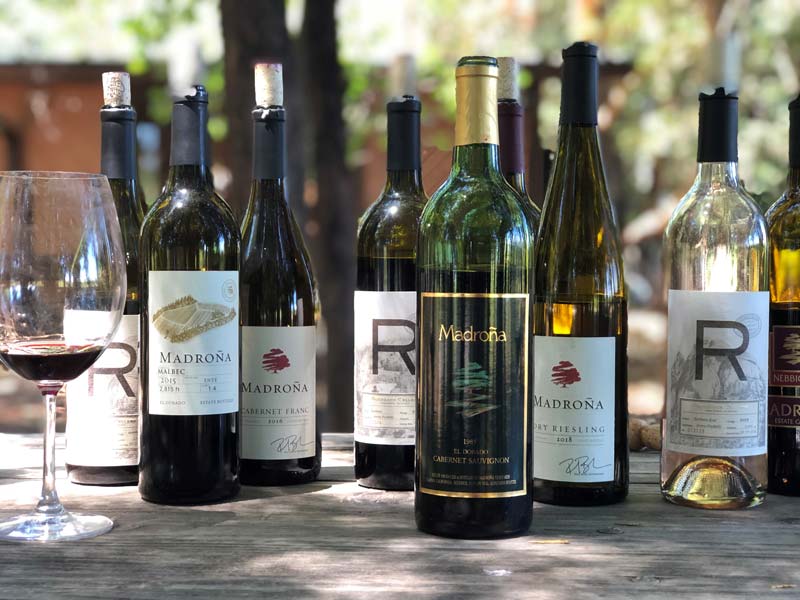
So in a sentence, here’s the update for the 2019 vintage.
The 2019 vintage with all its challenges produced a solidly large quantity of crop with positively stunning quality…for us. That’s the caveat. For us, meaning the vineyards of Madroña, Sumu Kaw, Enyé, Cardanini and Rucksack Cellars.
I personally know growers who did not pick their vineyards at all; some due to mildew and some due to lack of ripeness. I also know wineries who had to sort and throw out 50% of some grapes due to bunch rots.
But for us, it’s a spectacular vintage in the barrel right now. Do I have a couple of sluggish fermentations? Sure. Is there the potential for a hint of smoke in the Cab Sauvignon? Maybe. Do we run the risk of so many other producers having a bad year that the vintage inherits a horrible reputation? Sure. It happened in 1989 and 1998, if not 2010 and 2011 to some extent as well.
But we can only be responsible for that which we can control.
In the end, the unusual growing season seems to have given us fruit with better maturity and flavors at lower brix (sugar) levels. This will make wines with all the structure, fruit and balance we look for but at a lower alcohol.
And this is what could make 2019 the vintage of the decade--the potential for making truly exquisite world-class wines across the board!
